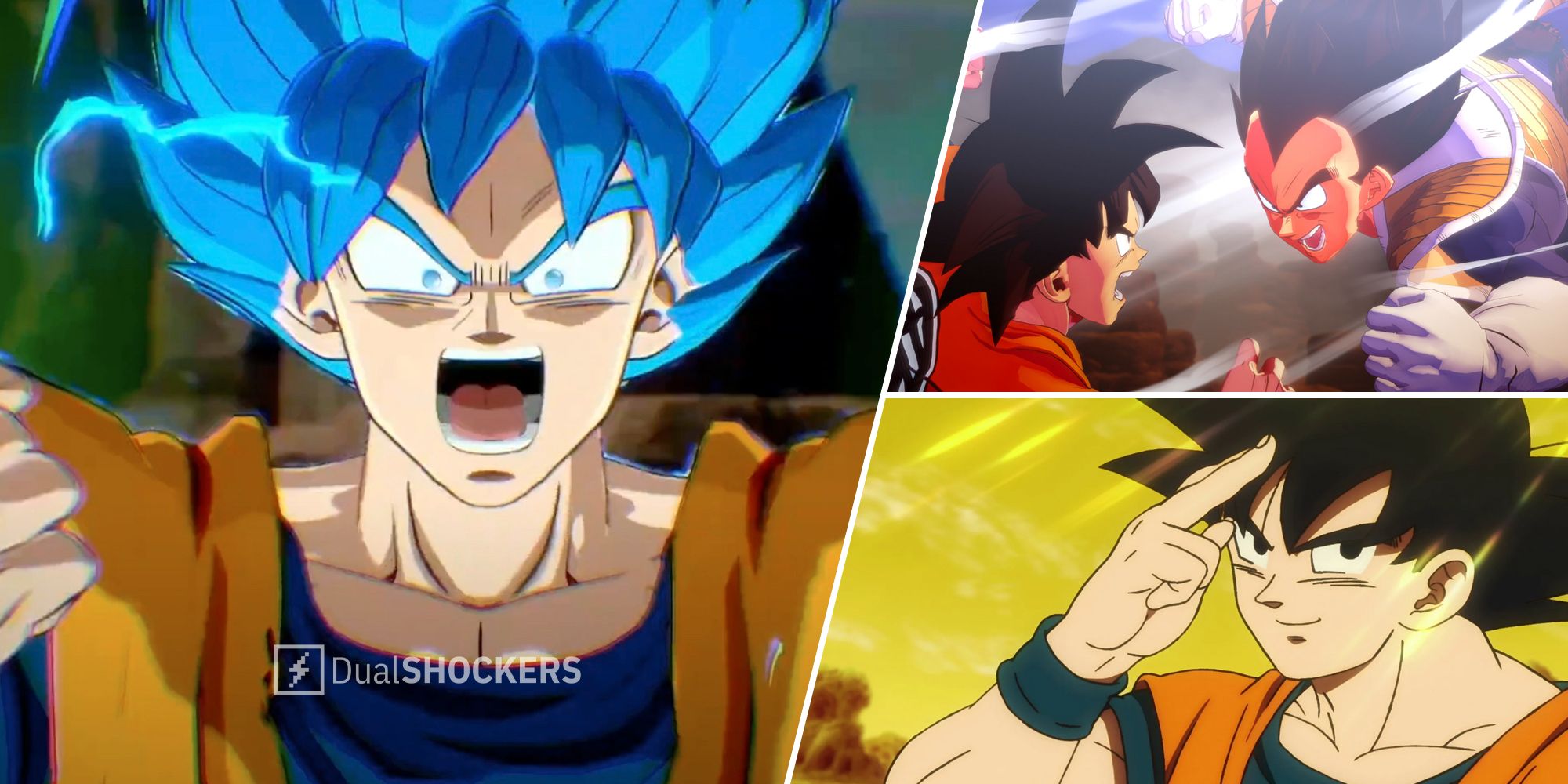A new Dragon Ball game, the much-anticipated Budokai Tenkaichi, has been announced and it’s hitting the scene like a mighty spirit bomb straight from the anime. For those uninitiated in the ways of Dragon Ball, the excitement may seem rather nebulous, especially when considering the vast array of contemporary Dragon Ball games such as FighterZ, Kakarot, World Mission, and Xenoverse saturating the market. I would argue that these games all lack a crucial component: a sense of unbridled freedom that only the Budokai Tenkaichi series (and the 3DS-exclusive game, Fusion) have truly captured in full.
Tenkaichi and Fusion aren’t exactly the most polished–or even canonical–Dragon Ball games out there, but here’s the thing: These games weren’t trying to stick to the script or set a standard. They were all about experimenting, inventing, and pushing the boundaries with wild new concepts like made-up fusions between characters, what-if scenarios, and brand-new evolution forms. It was definitely a lot more exciting than recycling classic characters and their forms again and again.
Perhaps we should take a moment to recall how Tenkaichi 3 introduced a colossal roster of 98 characters (with an astonishing total of 161 old and new character forms). Plus, let’s not forget the magnificent Fusions, which boasted at least 170 unfused characters and allowed you to merge any of them to create a nearly infinite number of character combinations (most of which were in-game exclusive).
Now I wonder why we should be happy to have around 40 characters at most in FighterZ (almost half of which are DLC) and at best one or two new characters gracing other games. Isn’t this a step backwards for the anime-fighting games?
Dragon Ball FighterZ, in particular, is a game that redefined the fighting game genre thanks to its slick controls and unparalleled flashiness. The thing is, it did so at the expense of forcing Dragon Ball characters into rigid and established fighting game archetypes for the sake of balance, instead of playing as they should (rush-downs, zoners, grapplers, all that). Meanwhile, in the anime, you had characters turning into giant monkeys or literally merging in the middle of a fight to turn the tables (fusing mid-fight is a gimmick only available in Tenkaichi). In the anime, it felt like the impossible was possible, and the unimaginable was just a step away, and Tenkaichi wasn’t any bit different.
Dragon Ball used to inspire games to create and innovate, rather than just copy what’s already safe and tried
Every Tenkaichi battle was a thrilling experience as I nimbly dodged character attacks with my Sonic Sway, and with the mere flick of my wrist, teleported anywhere I wanted to be. With every punch and special move I unleashed, my opponents were slammed into submission (and could even disintegrate entirely with certain ultimate attacks).
The original story cutscenes and dialogue were also beautifully woven into combat, making each battle unique and sentimental. The day/night system was even added just to set the stage for warriors like Raditz and Nappa, who could unleash their true potential during full moons. It was as if the game really wanted every single character to leave a lasting impression on the player, and have a real chance to shine.
This personal, genuine essence is absent from FighterZ most of all, which by design urges players to view characters in terms of how many points they would add to an ever-changing tier list, not for themselves. In Tenkaichi, It felt appealing, even natural, to put Goku and Vegeta on the same team, not because of their hitboxes or frame data, but to relive those big, head-turning moments like Super Saiyan Gogeta’s legendary entrance and his iconic Stardust Breaker move in real-time. What mattered back then was having the most fun during the match, rather than whether my character choices made logical or competitive sense.
Xenoverse undoubtedly offers some flexibility in customizing your character’s abilities, but its tame combat sours its potential from a technical standpoint, as you are unable to obliterate battlefields or engage in exhilarating beam clashes like in Tenkaichi. And there’s Kakarot, which seems content to copy story arcs without offering any groundbreaking innovations. Even fan-favorite characters appear as restricted, watered-down versions of themselves in these games, not to mention there isn’t any imaginative power-up for the characters like those found Tenkaichi or Fusions, nor any desire to shake up the status quo by offering a fresh, stimulating experience like Breakers’ 7-on-1 raids.
Dragon Ball used to inspire games to create and innovate, rather than just copy what’s already safe and tried. It’s a story where characters can destroy planets, go through hell and back, and obtain endless power-ups in limitless ways. It also has a liberating, unfettered power system, much freer than any other anime show (or game adaptation) I’ve seen on the market. Dragon Ball is just far too expansive to be shoehorned into the pre-defined concepts of a genre or a 1:1 adaptation. So here’s hoping the upcoming Tenkaichi gives this beloved series the treatment it so rightly deserves.



